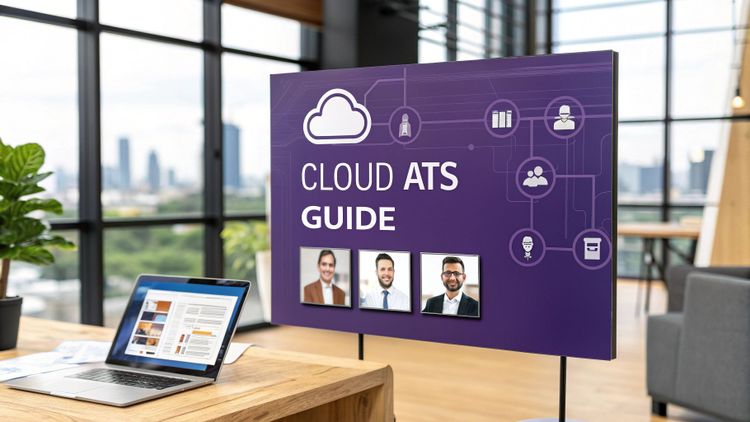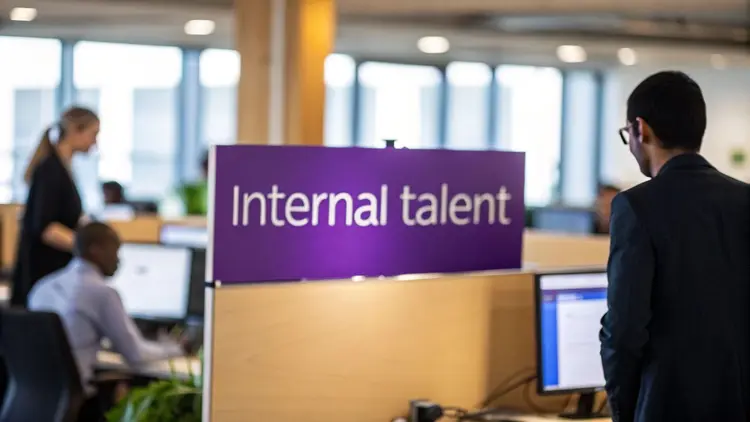Industry Trends
What is Mobile Recruiting and How to Make the Most of It

According to Statista, mobile internet penetration in the UK stood at 96% as of January 2021, which means over 65.3 million people browse the internet on their mobile phones.
That includes the top talent you want to hire. If you’re not implementing a mobile recruiting strategy, you might be missing out on the top-tier candidates that use mobile devices to find and research new roles.
In this blog post, we’re going to look at what mobile recruiting is and how you can use it to find great talent and streamline your hiring process.
Let’s dive in.
What is Mobile Recruitment?
Emails and phone calls still dominate recruiting. But increasing mobile usage has given rise to mobile recruiting and its popularity is growing exponentially.
Mobile recruitment is the utilisation of mobile technology to find, attract, and hire candidates. This includes using mobile apps, text messages, and mobile-optimised websites to fill job positions.
Why you should invest in mobile recruitment
You might wonder why you need to invest in mobile recruitment when your email and phone call recruitment strategies seem to work fine. But the question is, are they working as well as they should? Is that the best recruitment strategy for your business? Let’s look at how mobile recruitment can benefit you.
Save time and money
You will often need to hire recruiters to attract good talent. And recruiters don’t come cheap, with the average rate per placement in the UK ranging between 10-30% of the candidate’s base annual salary. Mobile hiring saves you money by connecting you directly to a bigger talent pool for your job position.
You can even go further and use mobile recruiting solutions that automate job advertisements and shortlisting, saving you time in the process.
Improve your employer brand
Most candidates are now using their mobile phones to find jobs and research employers. Using mobile recruitment and ensuring your website is mobile-optimised shows that you’re a technologically progressive company that cares about the mobile user’s experience.
Keeping up with mobile technology and creating a great experience for mobile applicants strengthens your brand and positions your company as an attractive employer.
Increase applicant engagement
Whether it’s checking emails, making calls, or browsing the web, most people now primarily use their mobile phones to communicate. When you implement a mobile recruiting strategy, you meet your candidates at the right place and increase overall engagement with your employer brand.
How to take advantage of mobile recruitment in your HR strategy
Invest in a mobile-friendly career site
First impressions matter for candidates just as much as they do for employers. Your site needs to be responsive and optimised for mobile to enhance the candidate’s experience and build a great first impression. A well-optimised mobile career site allows potential candidates to browse through the job catalogue seamlessly and creates a great user experience for them.
Use social networks
You need to strategically place your positions on platforms where applicants can easily see and access them. One of the best places to get maximum visibility for your job positions is social media. LinkedIn is, no doubt, the ultimate hiring social media platform. But other social media platforms like Facebook and Twitter are also great avenues to find applicants.
Most mobile users visit Facebook and Twitter on their mobile phones every day. By posting your open positions on social media, you access a huge pool of top talent that you’d probably have missed if you exclusively focused on job boards and hiring sites.
Mobile-optimised application process
A mobile-optimised application process works in tandem with a mobile-friendly site to create a good first impression and improve the candidates’ experience.
This means the questions, forms, videos and other content you use during an application show up correctly and provide a clear next step on every screen.
This will ensure that more people complete the application and have a great experience along the way, potentially reducing your time to hire.
With SeeMeHired, your applicants can apply via a dedicated mobile app so your application process is streamlined from the get-go. Learn more in a personalised demo.

Automated text messages
Text messages are a mobile-friendly and straightforward communication medium that allows you to give updates and schedule interviews easier and faster. Automated text messages help you engage with candidates without having to manually find and text people. As they progress through an application, you can use tools like Twilio and Zapier to trigger a specific message.
You can go a step ahead to send text reminders to shortlisted candidates on the day of the interview to confirm the time and the names of the interviewers. The trick to making automated text messages is to keep the messages short and relevant, as well as using the right tool for automation.
Use mobile-first hiring platforms
There are now Tinder-style apps for hiring like nPloy that allow candidates to browse jobs and get matched instantly.
You can also register for SeeMeHired as an employer and take advantage of our dedicated mobile apps to distribute your job posts.
The main idea here is that the way people search and apply for jobs is changing - including the tools and platforms they use. Mobile-first hiring platforms are a good first step to try and meet them where they are.
Conclusion
Mobile recruiting is a fairly new strategy that’s in the middle of an upward trend. As mobile technology continues to evolve, more people will gravitate towards using their mobile phones instead of their computers.
If you want to stay ahead of the curve, you must adopt mobile recruitment as an integral strategy to attract and engage job applicants. Your ability to adapt to this new recruitment strategy will determine the quality of hires you get for your business and how much it costs you to hire top talent.































